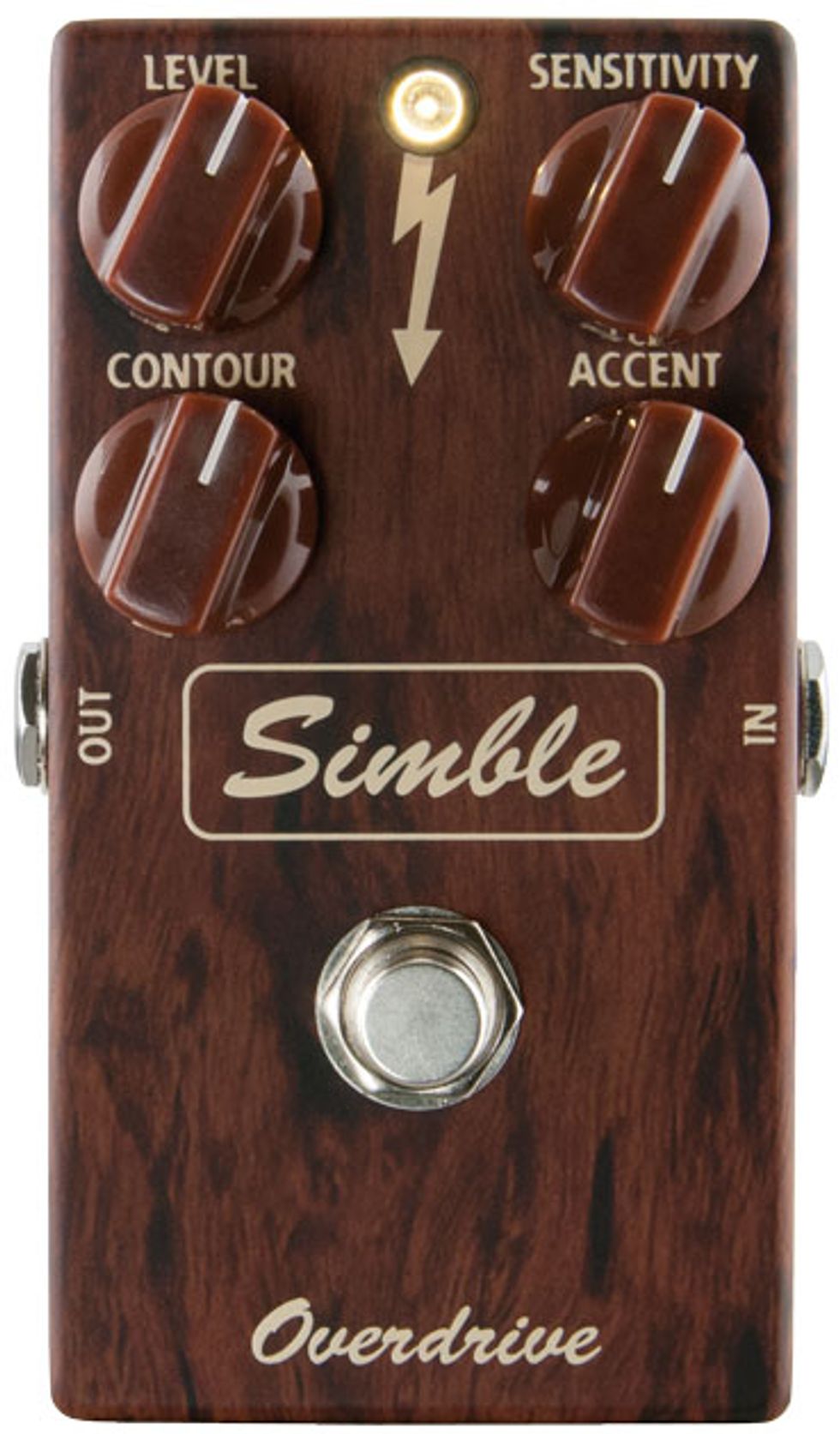For most of us, playing an original Dumble amplifier is more fantasy than reality. With only about 300 in circulation, these gems have reportedly fetched up to $50,000 in used condition. Consequently, the boutique market is filled with stompbox approximations to fit the budgets and tone jones of regular folks. One such creation is Mad Professor’s Simble. Though in its quest to capture the organic overdrive tones of the fabled Dumble on the cheap it delivers quite a few additional, pleasant surprises.
Simple Simble Doubles for Dumble
The Simble’s faux wood grain finish looks super cool—evoking thoughts of ’70s musical instrument and accessory design, when faux wood grain ruled the roost. The brown knobs look a bit camouflaged, which could be tricky on a dark stage, but for the most part the pedal is logically and sensibly laid out.
There are four knobs for level, sensitivity, contour and accent. Level controls the output volume, sensitivity increases gain, accent works like a presence knob, and contour adjusts the brightness of the output in the fashion of a one-knob EQ. The effect ships with a 9V battery, but can also power with a 9V barrel adaptor that’s mounted next to the input jack.
Wood Grain, Vintage Gain
The Simble’s instruction manual comes with several tone recipes. One of the most useful is the setting for a transparent boosted tone: max the level, neutralize the accent, keep the contour at 3 o’clock and add a dash of sensitivity. These settings are exceptionally clean for both single-coils and humbuckers.
Ratings
Pros:
Dumble-flavored tones and transparent clean boost sounds.
Cons:
Accent control can be noisy.
Tones:
Ease of Use:
Build/Design:
Value:
Street:
$189
Mad Professor Amplification Simble
madprofessorusa.com
I needed higher sensitivity settings and a little extra contour to cut through the mix in a full band setting. The pedal has impressive headroom and I rarely had to push the level control above 2 o’clock. Hooked into a vintage Vibrolux with sensitivity at high noon, the Simble nails SRV’s smoky strut, with a gritty, honking overdrive color and a touch of compression that cleans up beautifully with a nudge to the guitar’s volume knob. It’s a quiet pedal too. The only excess noise I could hear came with the sensitivity and accent controls in their upper reaches. And while both the accent and contour controls can add a little more top end bite, the contour setting tends to be less hissy at similar levels. Try increasing the contour control first if you’re having trouble getting out in front of a loud band.
The Simble absolutely excels with smaller amps, demonstrating a richness that most dirt boxes just don’t deliver. I find that many overdrives, especially with hot humbuckers, tend to sound mushy and compressed with smaller amplifiers. But with a touch of extra contour and accent the Simble manages to sound tough, gritty, and clear with small tube amps—a potential boon to club and session players.
The VerdictThe magic of a real Dumble amp is the way it deftly mixes traces of vintage amp overdrive and compression and an almost high gain amp-like bite. Mad Professor’s Simble replicates these characteristics nicely, but it’s not a one-trick-pony. There’s a multitude of great settings from clean boost to treble boost that sound excellent. The $149 price tag isn’t chicken scratch but compared to what a lot of Dumble-in-a-box pedals fetch—not to mention the real thing—it’s a very fair price to pay.








![Rig Rundown: Russian Circles’ Mike Sullivan [2025]](https://www.premierguitar.com/media-library/youtube.jpg?id=62303631&width=1245&height=700&quality=70&coordinates=0%2C0%2C0%2C0)

















